top of page

P R A G U E
Prague has been voted the most beautiful city in the world by Time Out magazine. Whether it’s wandering across the Charles Bridge or watching the Astronomical Clock in action. A trip to Prague involves Gothic architecture with a bit spooky atmosphere. In my opinion it is the perfect autumn destination. Brighter fall sunlight turns the town into the real “Golden Prague”.
Kotva 1
5 Best Things To Do
Kotva 2
A S T R O N O M I C A L C L O C K
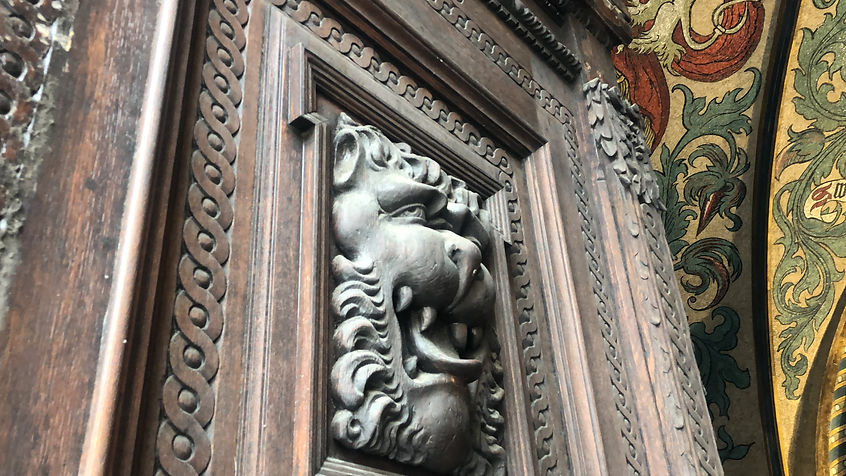

The most popular tourist attractions for visitors to Prague, the capital of Czech Republic. Every hour, on the hour, crowds gather under the Old Town Hall Tower to watch the Astronomical Clock, otherwise known as The Orloj in action. It shows the time, date and astronomical information such as the relative positions of the sun, moon, zodiacal constellations, and sometimes major planets.
Famous legend says that after Master Hanus built the clock in 1410, the city councilors feared that he would build similar ones for other cities so they had him blinded. Thus the medieval clock remained only in Prague. Out of revenge, the blind Hanus broke the clock, and for a century the clock was irreparable. Whether or not this legend is true, every hour figures on the sides of the clock become animated and two windows open up to reveal 12 apostles greeting the city. Four figures beside the clock represent the deepest anxieties of 15th-century Praguers: Death ringing a bell; Pagan Invasion represented by a Turk shaking his head; a Greed with his money bag - originally a Jewish moneylender and Vanity looking in a mirror.Go inside the Old Town Hall to take a look at the inner workings of the 12 apostles and to get a bird’s eye view of the Old Town.

C H A R L E S B R I D G E
Stroll through Old Town narrow cobbled streets until you come to Charles Bridge. Well-known for its Gothic and Baroque architecture. Lined along both sides of the bridge are 30 statues. The most famous figure is the monument of John of Nepomuk. He was according to the legend thrown off the bridge in 1393 for refusing to reveal the queen’s confessions (he was her priest) to Wenceslaus IV.
Tradition says that if you rub the bronze plaque and make a wish it will come true. Charles Bridge was the only possibility of crossing the river Vltava until 1841 and the most important connection between Prague Castle and the city's Old Town. This land connection made Prague important as a trade route between Eastern and Western Europe. Nowadays, it is only accessible to pedestrians and full of street artists who sell souvenirs. To get a different perspective of the city take a boat cruise on the Vltava River.
P R A G U E C A S T L E


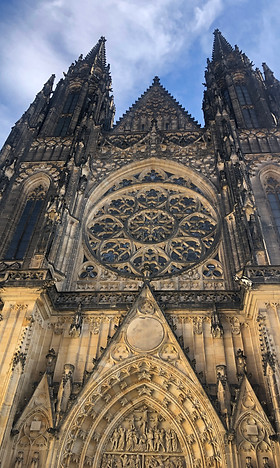
The Guinness Book of Records claims that Prague Castle is the largest ancient castle in the world. The castle has always been the seat of Czech monarchs, as well as the official residence of the head of state. Its huge complex is also home to sights such as stunning St. Vitus Cathedral and charming Golden Lane.
The Golden Lane is one of the city’s most charming alleyways. You can explore several of its houses (museums) to see how the Castle's different inhabitants lived. The famous Jewish-Czech writer, Franz Kafka, lived in house number 22 from 1916 – 1917. His 39-ton heavy Rotating Head made of 42 independent rotating levels is located in the Quadrio Shopping Center backyard.
When leaving Prague Castle, walk down by the Castle stairs (Zámecké schody) where is an amazing viewpoint to the city.
Kotva 3
Continue to Narodni trida street where are traditional Czech restaurants which aren’t touristy. Narodni trida leads to Wenceslas Square. Perfect place to do some shopping or to get yourself a street food dessert, trdelník. Describing their unique shape, these “chimney cakes” can be found in every tourist area in Prague. It is interesting to watch them be prepared. Thick dough coated in sugar is wrapped around a thick pole which is rotated slowly over a fire until the sugar caramelizes to a golden-brown color.

Kotva 4
Kotva 5
O L D J E W I S H C E M E T E R Y

In front of the entrance to the Old Jewish Cemetery is Pinkas Synagogue. The synagogue is a memorial for the 77,297 Jews from Czechoslovakia killed during the Holocaust. Its walls inside are covered with all their names. There is an exhibition of drawings of children who were locked away in the Terezín concentration camp. The Old Jewish Cemetery was for many years the only place where the Jewish population of Prague were allowed to be buried. Due to lack of space, the bodies were buried on top of each other throughout the years, sometimes piling up to 10 bodies in one grave space. There are more than 100,000 bodies buried here. Walking through it brings many feelings to process.
Relax your mind in Prague Botanical Garden where the leaves of trees in fall receive copper-orange color. Enjoy city’s best views from Letná Park and go for evening walk to Vyšehrad.
This itinerary can be done in 3 full days but of course the more time you have the better for you. I stayed in Motel One Prague-Florentinum which has underground secure parking and is close to yellow metro line station Namesti republiky.


T H E B O N E C H U R C H S E D L E C

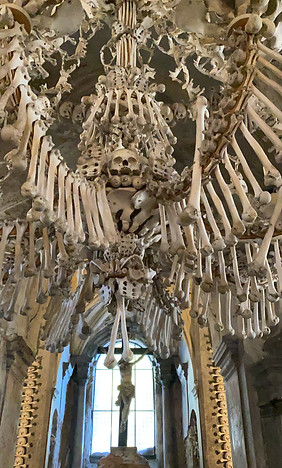
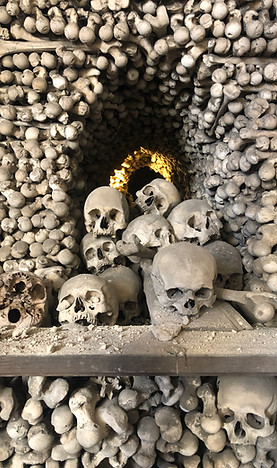
Sedlec Ossuary in Kutná Hora, known as the Bone Church of the Czech Republic is located an hour-long ride from Prague. "It is decorated with human bones of up to 60,000 victims of the plague, of famine and Hussite wars, as well as ordinary people who lived and died in Kutná Hora," according Radka Krejčí, director of the Sedlec parish. Giant chandelier contains every single bone in the human body at least once. There is a legend of a half-blind monk who arranged the bones and skulls into the pyramids.
This Cemetery Church of All Saints with an ossuary is still a functional Roman Catholic church consisting of two-stories.
The lower chapel, which was built below ground level to meet the standards of Christian burial, was used for respectful storage of bones. The main message memento mori which literally means "Remember you must die" is not a celebration of death. Instead "it should lead people to think about life and death and that we are alive now, but we do not know the day or the minute when it can change," explains Radka Krejčí. No doubt that this transcendental, a bit spooky place is full of mixed emotions. Somebody finds here the peace, somebody anxiety.
The upper chapel has been used for Mass for the dead, which remains another powerful message for visitors that "we should live our lives well and rightly so that we may have the hope of resurrection before God 's judgment," adds Krejčí.
The church is a holy place, please respect it while visiting. Since some visitors were behaving inappropriately it is forbidden to take photos and make videos inside the places. We would like to thank to Radka Krejčí for special permission for making this video so we can share this world’s more macabre art with you. Buy official tickets here. A trip to Kutna Hora wouldn't be complete without visiting also two UNESCO monuments Cathedral of Assumption of Our Lady and St Barbara's Cathedral.
Kotva 6
P H O T O G A L L E R Y
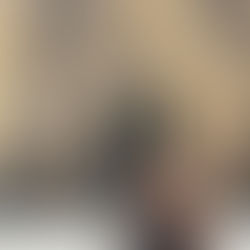

bottom of page


















































